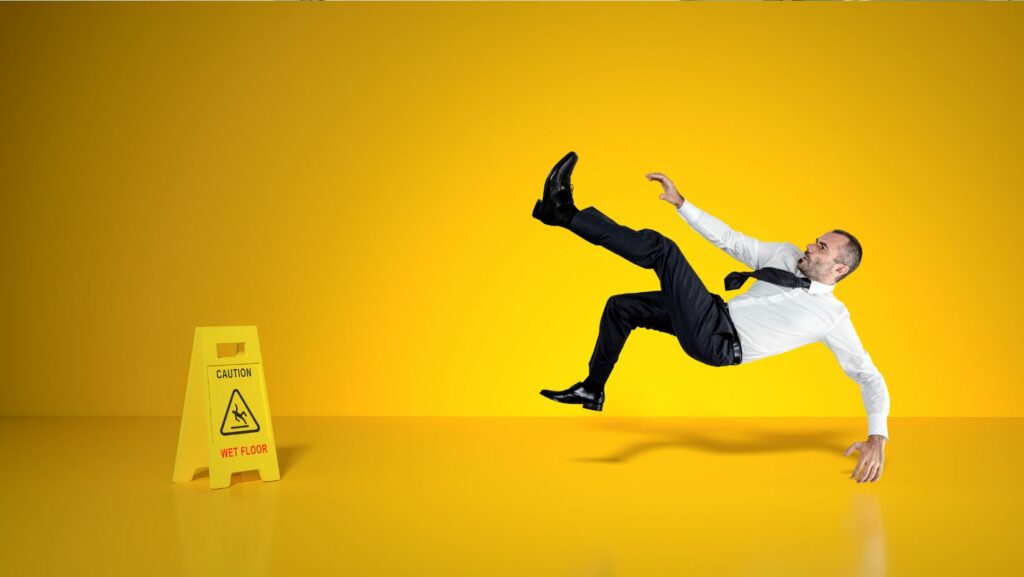Navigating the safety corridors in public and private spaces brings us to the critical yet often overlooked aspect of preventing slips, trips, and falls. These incidents are not just minor inconveniences; they are leading causes of accidents worldwide, affecting millions of people annually, from the young sprinting through school hallways to the elderly navigating the quiet corners of their homes. In this exploration, we delve into the measures and technologies developed to combat this issue, ensuring that every step is on solid ground.
Understanding the Slippery Slope
The journey towards creating slip-free spaces begins with understanding the root causes of slips and falls. Various factors contribute to these accidents, including wet surfaces, sudden changes in flooring, inadequate lighting, or simply the type of material used on the floor. Recognizing these hazards is the first step in prevention, guiding us toward solutions that not only mitigate risks but also enhance the overall safety and accessibility of our environments.
The Science of Staying Upright
The science of friction and floor slip testing lies at the heart of preventing slips and falls. This process assesses slippery surfaces under different conditions, providing essential data that can inform safer flooring choices. Engaging in floor slip testing is a proactive measure, highlighting potential hazards before they lead to accidents. This approach embodies the commitment to safety, ensuring that spaces are visually appealing and fundamentally secure.
Materials Matter: Choosing the Right Flooring
The quest for slip-free spaces brings us to the pivotal role of materials. From the rugged texture of outdoor walkways to the polished elegance of indoor floors, the choice of material can dramatically influence the likelihood of slips and falls. Advances in flooring technology have introduced materials that combine aesthetic appeal with enhanced grip, offering a compromise between functionality and style. These materials are tested rigorously, ensuring they meet the standards to keep people safe.
Technological Triumphs in Traction
Innovation plays a crucial role in our pursuit of safer spaces. Modern technology has given rise to sophisticated solutions like anti-slip coatings, which can be applied to existing floors to improve grip.
Furthermore, wearable tech, such as shoes designed to increase traction, offers personal safety solutions that complement environmental modifications. These advancements represent the synergy between human ingenuity and the commitment to safety, marking significant strides in the ongoing battle against slips and falls.
Education and Awareness: The Human Element
While technology and materials are crucial, the human element cannot be overlooked. Education and awareness efforts play a significant role in preventing slips and falls. Understanding the risks, recognizing hazardous conditions, and knowing how to respond effectively can dramatically reduce the incidence of accidents. Workshops, signage, and campaigns designed to raise awareness about the importance of paying attention to where we step are integral to fostering safer environments.
Regulation and Compliance: Setting Safety Standards
The path to slip-free spaces is also paved with regulations and standards that mandate certain safety measures. These guidelines ensure that builders, architects, and property owners prioritize floor safety during construction and maintenance. Compliance with these standards is not just a legal requirement; it’s a moral obligation to protect the well-being of everyone who walks through our doors. Regular inspections and adherence to best practices in floor safety are essential components of this commitment.
The Role of Professional Services
Professional services specializing in slip prevention offer valuable expertise in creating safer spaces. These experts conduct comprehensive assessments, recommend appropriate interventions, and provide guidance on maintaining slip-free environments. Their work is a testament to the importance of specialized knowledge in safeguarding our communities against the risks of slips and falls.
A Collaborative Effort Towards Safety
Ultimately, the pursuit of slip-free spaces is a collaborative effort that involves manufacturers, policymakers, property owners, and the public. Each stakeholder has a role, from advocating for stronger safety standards to adopting best practices in floor maintenance. By working together, we can create environments where safety is woven into the very fabric of our spaces, ensuring that every step taken is on solid ground.
The journey toward creating slip-free spaces is a multifaceted endeavor encompassing science, technology, education, and collaboration. By understanding the causes of slips and falls, embracing innovative solutions, and prioritizing education and compliance, we can significantly reduce the risks associated with these accidents. As we continue to navigate this path, let us remain committed to pursuing safety, ensuring that our steps are always on solid ground, protected by the best practices in slip prevention and the unwavering dedication to well-being.




More Stories
Who Is Angelina Jolie: Get To Know Her Family
Why Professional Garage Door Installation Is Crucial
What Are The Most Common Causes of Water Damage in Homes and How to Prevent Them